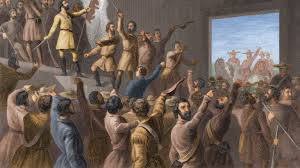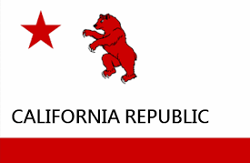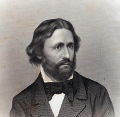The Bear Flag Revolt
The Bear Flag Revolt was a short-lived rebellion of American settlers in California against the Mexican government in the summer of 1846. 
Mexico had won its independence from Spain in 1821. California had been part of New Spain and then became part of Mexico, as the Department of Alta California. As the 19th Century progressed, however more and more Americans had moved to California and Mexican governance activity in the area had become less and less. In fact, in 1845, California was divided into two regions, each with its own governor. Rumors streamed through the area throughout that year and the next that Mexican troops would be arriving to restore order. Not wanting to wait for this, some Americans, in June 1846, declared themselves independent from Mexico. The rebels, led by William Ide and Ezekiel Merritt, numbering several dozen, had seized Sonoma, a Mexican settlement north of San Francisco on June 14, and had claimed as a prisoner of war Mariano Vallejo, a retired Mexican general. As it turned out, Vallejo was only too willing to support the independence of Ide and Merritt and their followers. Ide wrote a proclamation of independence and distributed it around northern California. 
The rebels decided that they needed a flag to wave in favor of their efforts and created what became the Bear Flag, featuring a single red star, a drawing of a standing grizzly bear, and the words "California Republic." Also at this time, U.S. Army forces under John C. Frémont (including the famed wilderness guide Kit Carson) had occupied Sutter's Fort (owned by John Sutter In the end, the rebellion proved unnecessary because American military victories over Mexico piled up. In July, U.S. forces under Pacific Squadron Commander Commodore John Sloat captured Monterey and replaced the Mexican flag with the American flag above the Monterey customs house. The Bear Flag rebels ended their quest because it had been overtaken by events. California joined the Union in 1850. The original Bear Flag fell victim to the devastation associated with the San Francisco earthquake and fire of 1906. In 1911, the state changed its flag to the Bear Flag. (The bear on that flag is on all fours, as if walking.) |
|
Social Studies for Kids
copyright 2002–2025
David White



 of
of 

